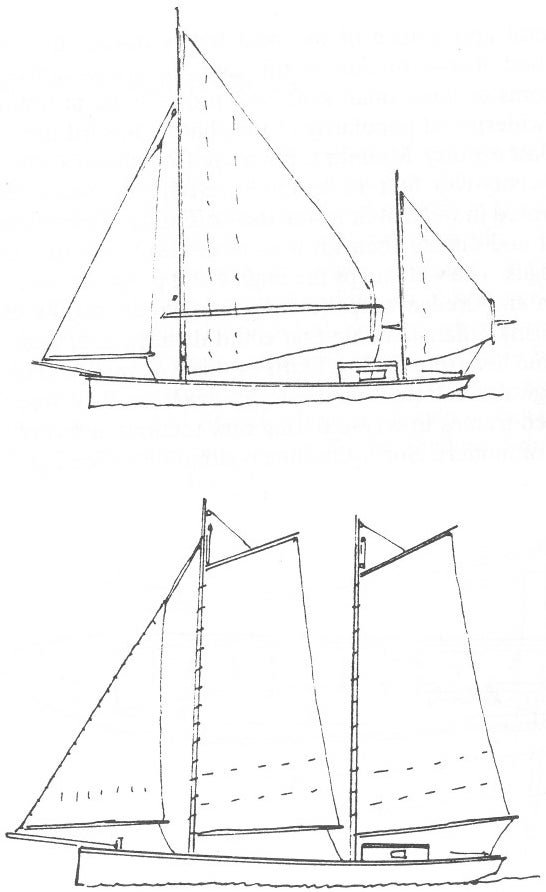
Sharpie (Chapelle 1961:144)
Sharpies although not a native boat design, became the most common work vessel in the Carolinas. Sharpies are identified by a flat bottom, long and narrow, straight stem, low freeboard, and a rounded stern. They also had two masts which were generally in a leg-o-mutton style rig setup.
In 1876, a businessman from Connecticut named George Ives came to Beaufort, NC. Planning to create a new oyster business, he brought a New Haven sharpie since he did not believe that local vessels would be able to work with the new fishing methods. The local fisherman, however, did not trust the new design, so George Ives orchestrated a race between his sharpie and all of the local boats. His boat won this race and soon many of the North Carolina boatbuilders began construction of sharpies.

Basic Rigged Sharpie (Alford 1990:7)
Over time, the North Carolina sharpies began to evolve on their own and ended up being entirely different from the sharpies in New England. The change from New England to Carolina sharpie was primarily centered around the rigging. This change led to the sharpies being rigged as Gaff Schooners and Gaff Ketches. The vessels with these different rigging styles became known as Core Sound Sharpies and became the premier vessel in North Carolina.

North Carolina Rigged Sharpies (Alford 1990:9)
Core Sound Sharpies, despite being flat-bottomed, were known to make voyages to the West Indies. As a result of their ocean travels, sharpies nearly replaced the purpose-built schooners due to the cost difference. Like all other vessels, the early 1900s saw the introduction of motors and saw many sharpies either converted or replaced by motor-powered vessels. Up until the 1960s, though, the Augusta M was still working through sail power (Alford 1990:5-8).
